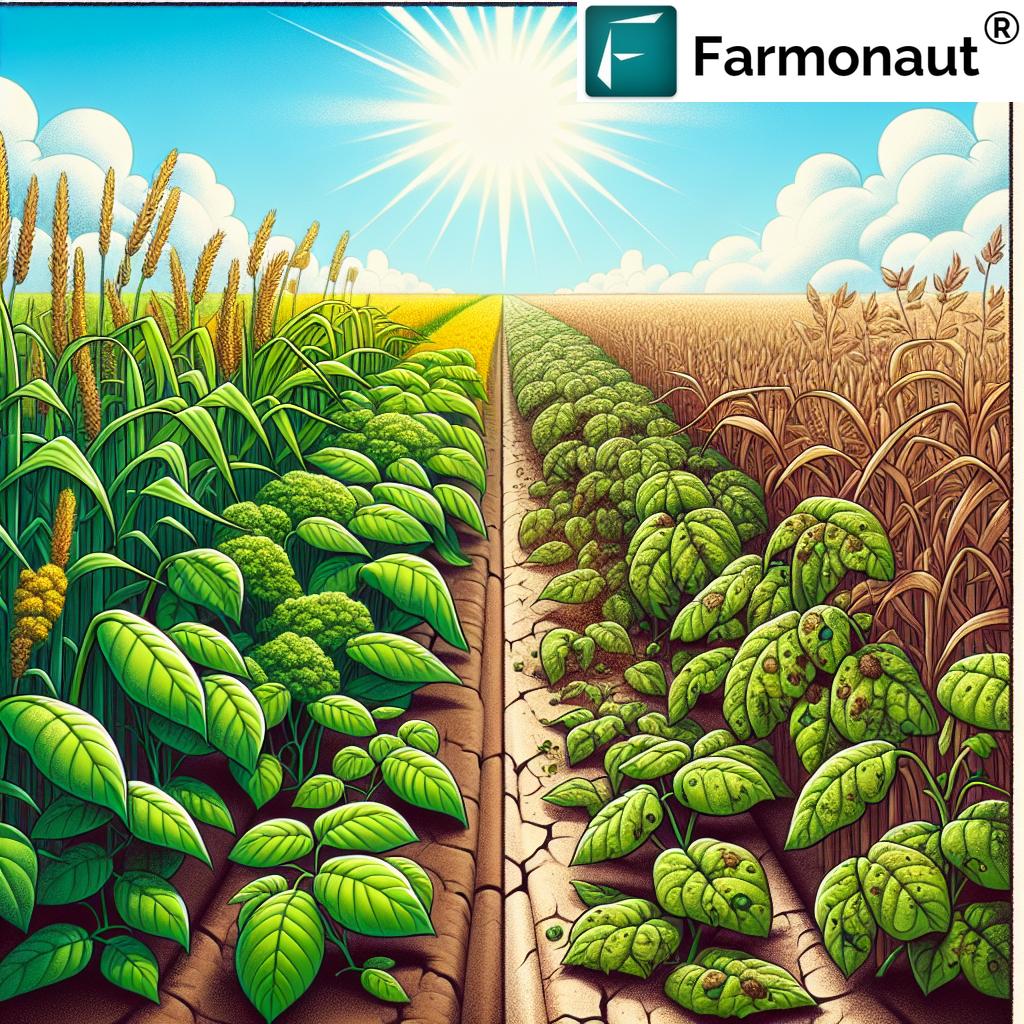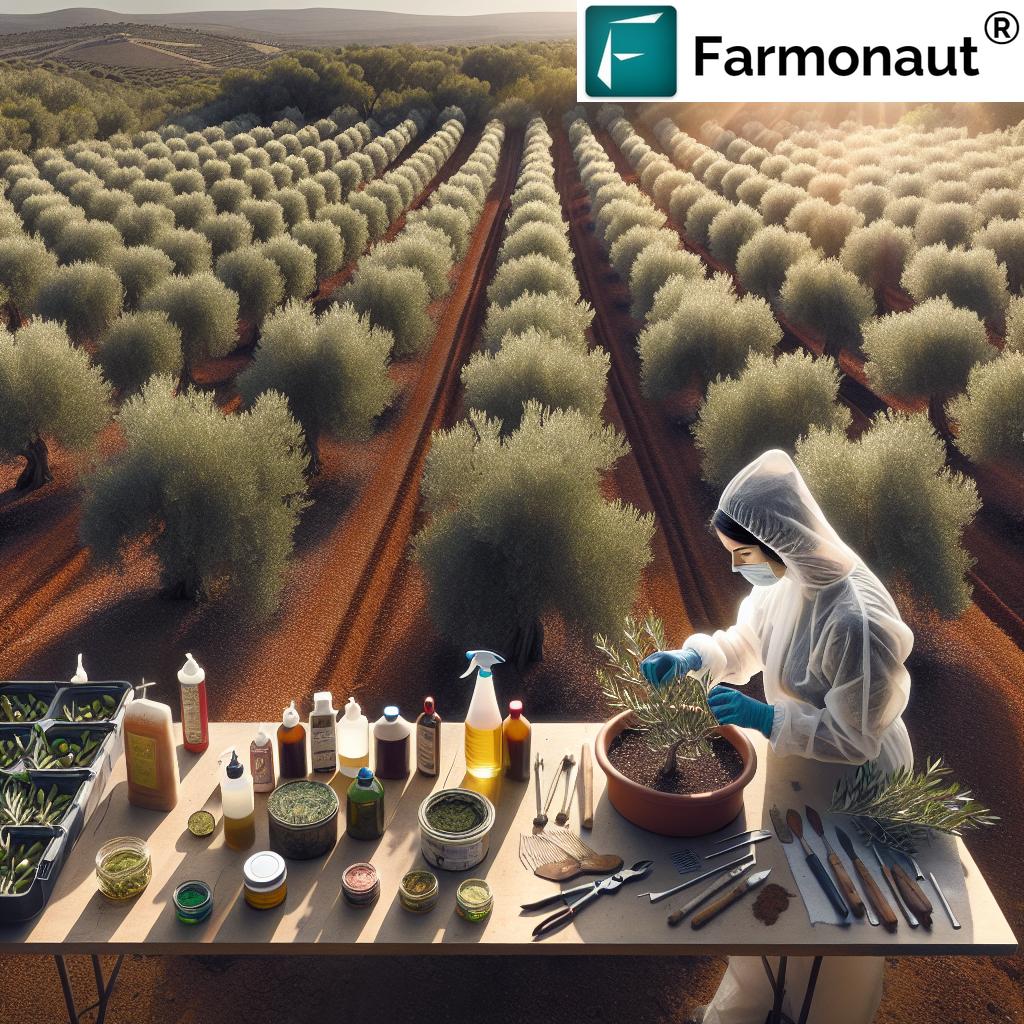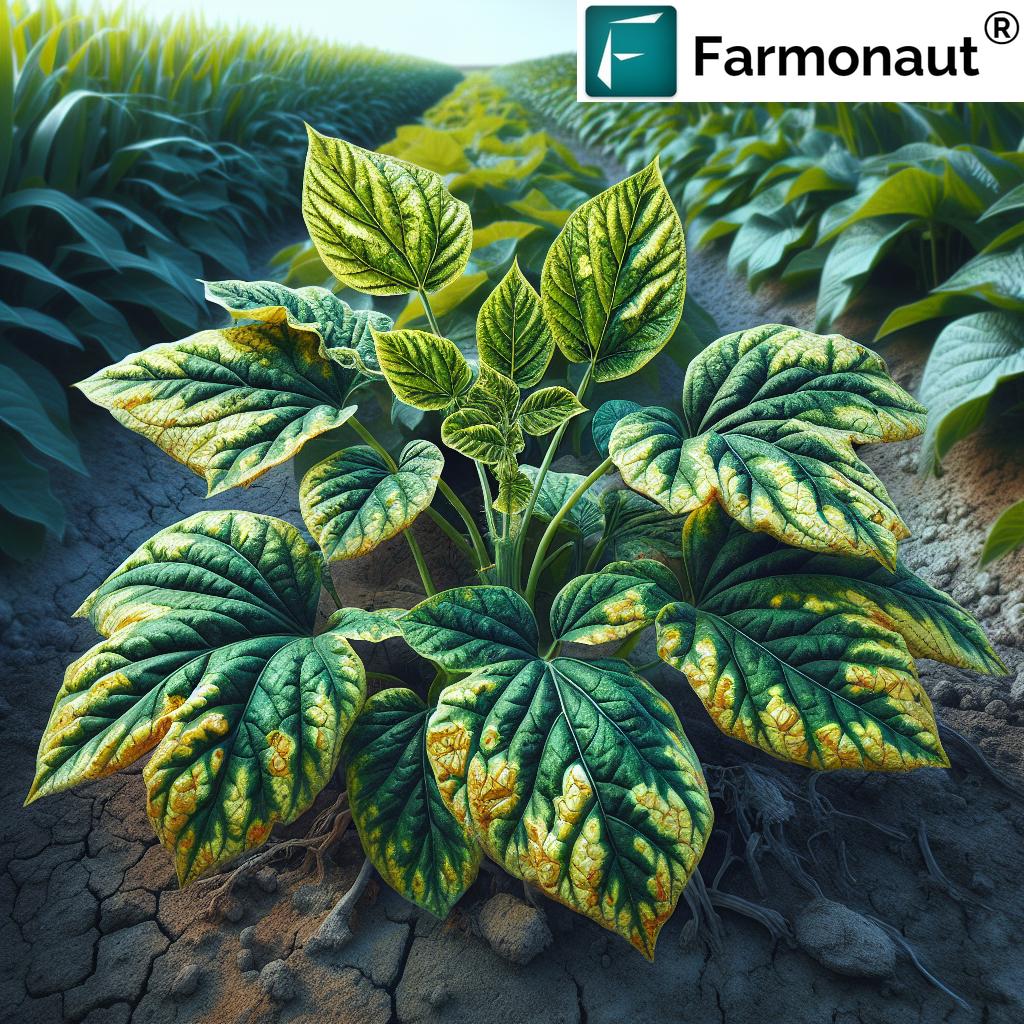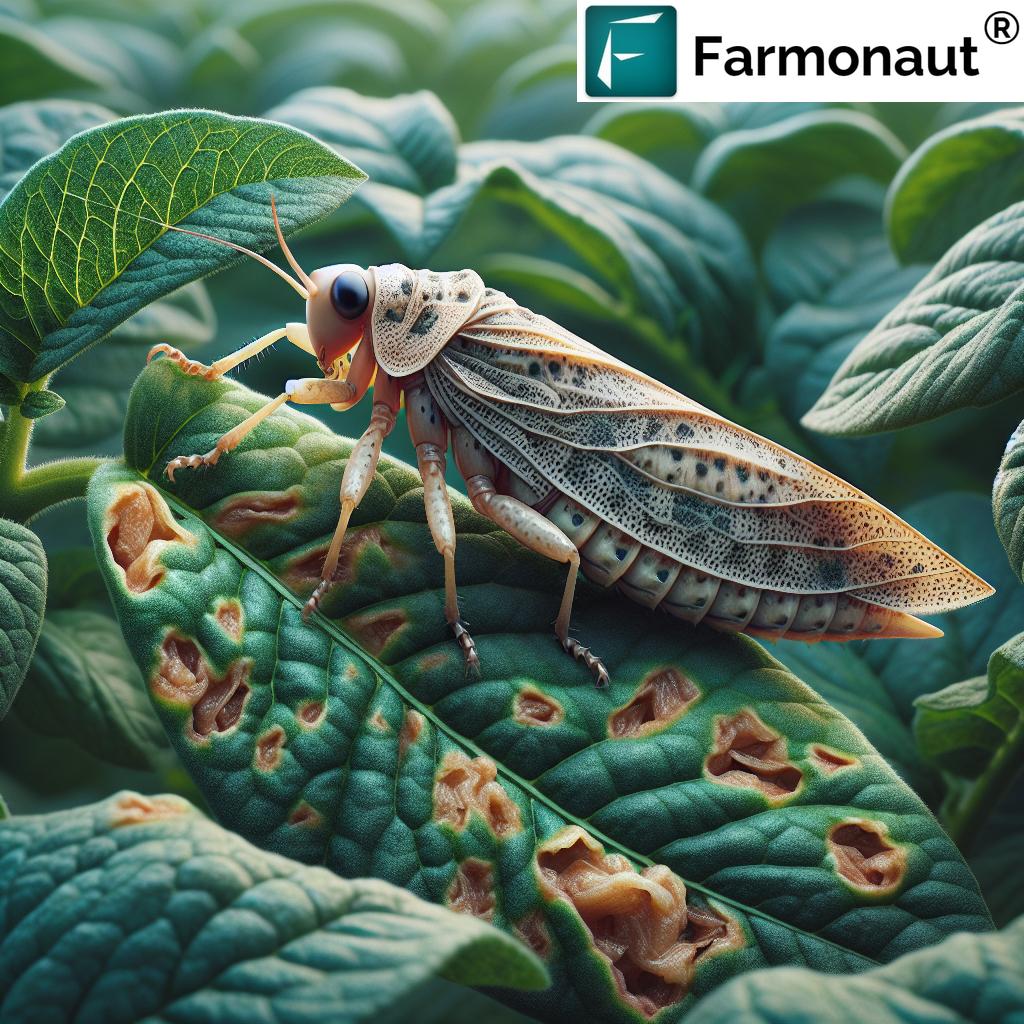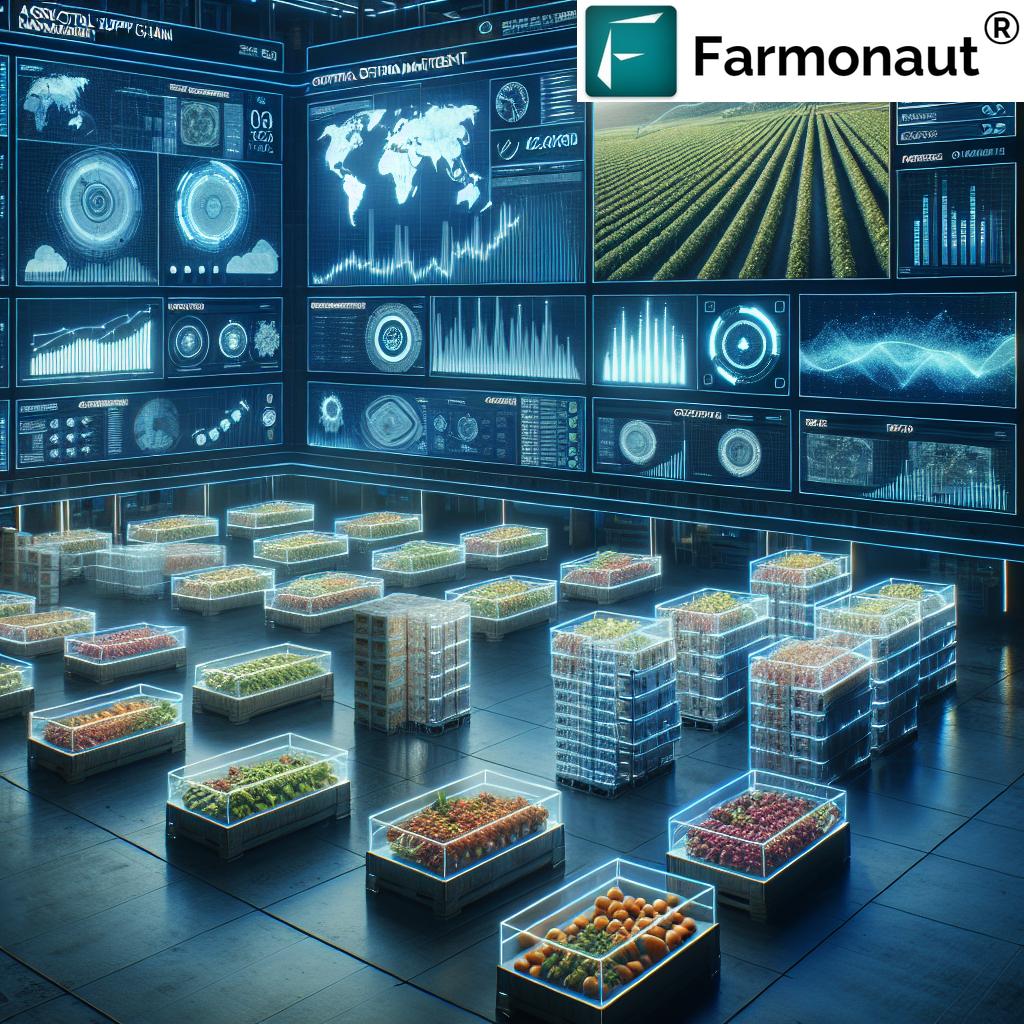Anthracnose: Symptoms, Control, and Fungicides for 25+ Crops and Plants
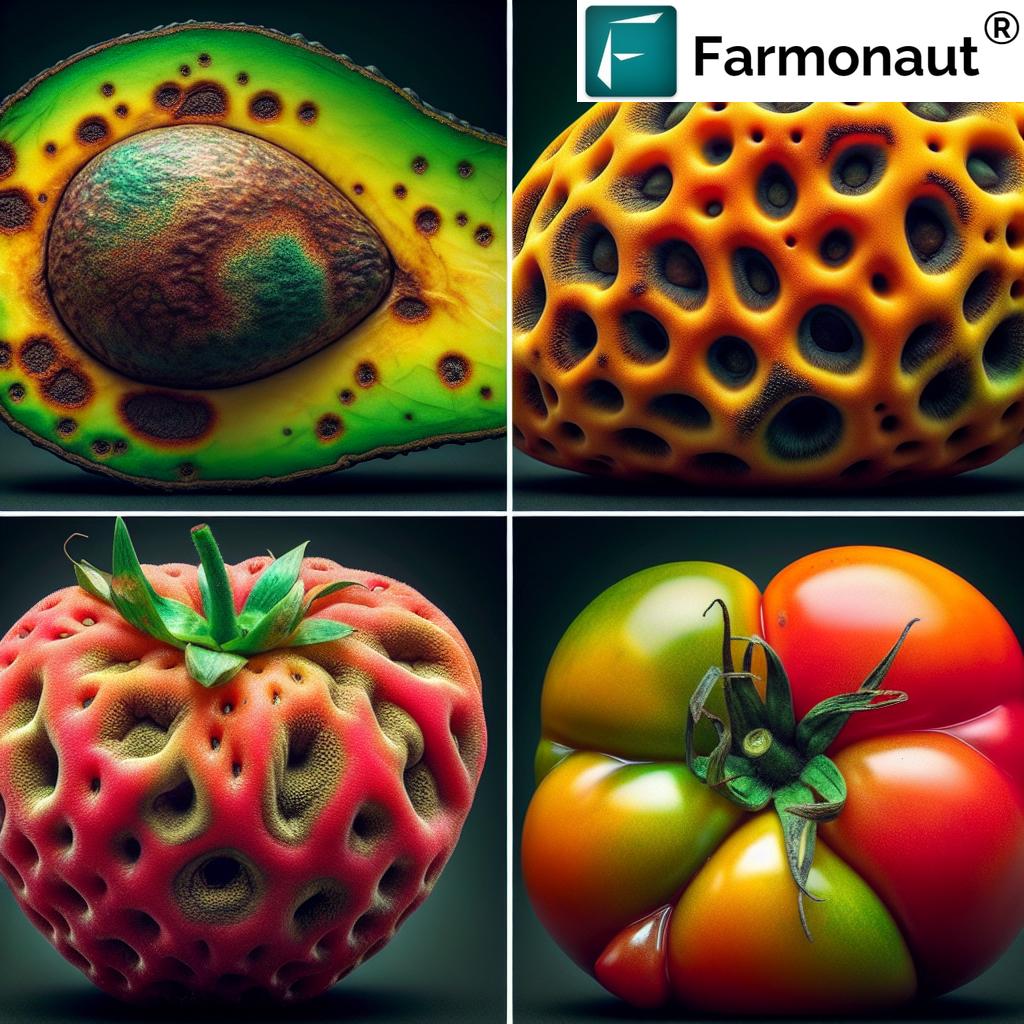
At Farmonaut, we understand the critical importance of managing crop diseases effectively. One of the most prevalent and destructive fungal diseases affecting a wide range of crops and plants is anthracnose. In this comprehensive guide, we’ll explore the symptoms, control measures, and fungicide treatments for anthracnose across various crops, demonstrating how our satellite-based monitoring system can aid in early detection and management.
What is Anthracnose?
Anthracnose is a group of fungal diseases caused by various species of Colletotrichum. This disease affects a wide range of plants, including fruits, vegetables, ornamental plants, and trees. The term “anthracnose” comes from the Greek words “anthrax” (coal) and “nosos” (disease), referring to the dark, sunken lesions characteristic of the disease.
Common Hosts of Anthracnose
Anthracnose can affect numerous plants, including:
- Fruits: avocado, mango, strawberry, citrus, banana, apple, papaya, peach
- Vegetables: bean, pea, tomato, cucumber, watermelon, pumpkin, potato
- Other crops: coffee, cocoa, turmeric, soy
- Trees and ornamental plants: maple, aloe vera, agave
- Nuts: almonds, cashew
Symptoms of Anthracnose
The symptoms of anthracnose can vary depending on the host plant and the specific Colletotrichum species involved. However, some common symptoms include:
- Dark, sunken lesions on fruits, leaves, and stems
- Circular or angular spots on leaves
- Wilting and dieback of young shoots
- Premature leaf drop
- Fruit rot and decay
Anthracnose Symptoms Across Different Crops
| Crop | Symptoms | Farmonaut’s Satellite Detection |
|---|---|---|
| Mango | Dark spots on fruits, leaf spots, twig dieback | Early detection of canopy changes and stress indicators |
| Avocado | Sunken lesions on fruit, leaf spots, branch cankers | Identification of chlorophyll reduction in affected areas |
| Strawberry | Fruit rot, leaf spots, crown rot | Detection of plant vigor changes and stress patterns |
| Bean | Dark lesions on pods, leaf veins, and stems | Early spotting of crop health variations and potential hotspots |
| Tomato | Sunken circular lesions on fruits, leaf spots | Identification of spectral changes indicating plant stress |
Our satellite monitoring system at Farmonaut can detect early signs of anthracnose infection through spectral analysis, allowing for timely intervention and management across various affected crops.
Anthracnose Control Measures
Effective control of anthracnose requires an integrated approach combining cultural, biological, and chemical methods. Here are some key strategies:
1. Cultural Control
- Practice crop rotation with non-susceptible plants
- Improve air circulation by proper spacing and pruning
- Remove and destroy infected plant parts
- Use disease-resistant varieties when available
- Implement proper irrigation techniques to avoid leaf wetness
2. Biological Control
Some biological control agents have shown promise in managing anthracnose:
- Trichoderma species
- Bacillus subtilis
- Pseudomonas fluorescens
3. Chemical Control
Fungicides play a crucial role in controlling anthracnose, especially in severe cases. Some effective fungicides include:
- Copper-based fungicides
- Mancozeb
- Chlorothalonil
- Azoxystrobin
- Propiconazole
It’s important to note that fungicide effectiveness can vary depending on the crop and the specific Colletotrichum species. Always follow label instructions and local regulations when applying fungicides.
Anthracnose Management in Specific Crops
Mango Anthracnose
Mango anthracnose, caused by Colletotrichum gloeosporioides, is a significant disease affecting mango production worldwide.
Symptoms:
- Dark spots on fruits that expand and may coalesce
- Leaf spots and blossom blight
- Twig dieback in severe cases
Control Measures:
- Prune and destroy infected branches
- Apply copper-based fungicides during flowering and fruit development
- Use hot water treatment for postharvest disease control
Avocado Anthracnose
Avocado anthracnose is primarily caused by Colletotrichum gloeosporioides and can lead to significant postharvest losses.
Symptoms:
- Sunken, dark lesions on fruit
- Leaf spots and branch cankers
Control Measures:
- Maintain proper orchard sanitation
- Apply copper-based fungicides during fruit development
- Implement careful handling practices during harvest and packing
Strawberry Anthracnose
Strawberry anthracnose can be caused by several Colletotrichum species, including C. acutatum and C. fragariae.
Symptoms:
- Fruit rot with sunken lesions
- Dark lesions on stolons and petioles
- Crown rot in severe cases
Control Measures:
- Use disease-free planting material
- Implement plastic mulch to reduce splash dispersal
- Apply fungicides such as captan or azoxystrobin during flowering and fruiting
Bean Anthracnose
Bean anthracnose, caused by Colletotrichum lindemuthianum, can severely impact bean production.
Symptoms:
- Dark, sunken lesions on pods
- Lesions on leaf veins and stems
- Seed discoloration
Control Measures:
- Use certified disease-free seeds
- Implement crop rotation with non-host plants
- Apply fungicides such as mancozeb or chlorothalonil
Tomato Anthracnose
Tomato anthracnose is primarily caused by Colletotrichum coccodes and can lead to significant fruit losses.
Symptoms:
- Circular, sunken lesions on ripe fruits
- Dark spots on leaves and stems
Control Measures:
- Practice crop rotation
- Use staking or caging to keep fruits off the ground
- Apply fungicides such as chlorothalonil or copper-based products
Farmonaut’s Role in Anthracnose Management
At Farmonaut, we leverage advanced satellite technology and artificial intelligence to aid in the early detection and management of crop diseases like anthracnose. Our platform offers several key benefits:
- Early Detection: Our satellite-based crop health monitoring can identify subtle changes in plant health that may indicate the onset of anthracnose before visible symptoms appear.
- Targeted Treatment: By pinpointing affected areas, we help farmers apply fungicides more efficiently, reducing costs and environmental impact.
- Continuous Monitoring: Our system provides regular updates on crop health, allowing for timely interventions and assessment of treatment effectiveness.
- Data-Driven Decisions: Our AI-powered advisory system, Jeevn AI, provides personalized recommendations for disease management based on real-time data and historical patterns.
To learn more about how Farmonaut can help you manage anthracnose and other crop diseases, visit our app or explore our API services.
Sustainable Anthracnose Management
As we strive for more sustainable agricultural practices, it’s crucial to consider environmentally friendly approaches to anthracnose management:
- Integrated Pest Management (IPM): Combine cultural, biological, and chemical control methods to minimize fungicide use.
- Resistant Varieties: Invest in research and development of anthracnose-resistant crop varieties.
- Precision Agriculture: Utilize technologies like Farmonaut’s satellite monitoring to optimize fungicide applications and reduce overall usage.
- Organic Fungicides: Explore the use of organic and biopesticides as alternatives to synthetic fungicides.
The Economic Impact of Anthracnose
Anthracnose can have significant economic implications for farmers and the agricultural industry:
- Crop Losses: Severe infections can lead to substantial yield reductions and quality degradation.
- Increased Production Costs: The need for fungicide applications and additional labor for disease management can raise production costs.
- Market Access: Strict quality standards in some markets may reject produce affected by anthracnose, impacting export opportunities.
- Long-term Effects: Persistent infections can weaken plants, making them more susceptible to other stresses and reducing productivity over time.
By implementing effective management strategies and leveraging technologies like Farmonaut’s satellite monitoring, farmers can mitigate these economic impacts and protect their livelihoods.
Climate Change and Anthracnose
Climate change is expected to influence the prevalence and severity of anthracnose in various ways:
- Altered Disease Patterns: Changes in temperature and precipitation may shift the geographical distribution of anthracnose and affect its severity.
- Extended Growing Seasons: Longer growing seasons in some regions may increase the risk of anthracnose infections.
- Increased Plant Stress: Climate-induced stress on plants may make them more susceptible to anthracnose infections.
- New Host-Pathogen Interactions: Changing environmental conditions may lead to the emergence of new anthracnose-causing pathogens or host plant susceptibilities.
Farmonaut’s satellite monitoring and AI-driven advisory systems can help farmers adapt to these changing conditions by providing real-time data and predictive insights on disease risks.
Research and Innovation in Anthracnose Management
Ongoing research and technological innovations are paving the way for improved anthracnose management strategies:
- Genetic Resistance: Scientists are working on identifying and incorporating anthracnose-resistant genes into crop varieties.
- Novel Biocontrol Agents: Research into new biological control agents, including beneficial microorganisms, shows promise for sustainable disease management.
- Nanotechnology: Nanoparticle-based fungicides are being developed for more efficient and targeted disease control.
- AI and Machine Learning: Advanced algorithms, like those used by Farmonaut, are enhancing disease prediction and early detection capabilities.
- Precision Application Technologies: Innovations in spraying technologies are improving the efficiency and reducing the environmental impact of fungicide applications.
Global Perspective on Anthracnose
Anthracnose affects crop production worldwide, with varying impacts across different regions:
- Tropical Regions: Countries in tropical climates often face more severe anthracnose challenges due to favorable conditions for fungal growth.
- Temperate Regions: While generally less severe, anthracnose can still cause significant problems in temperate areas, especially during warm, wet seasons.
- Developing Countries: Limited access to fungicides and advanced technologies can make anthracnose management particularly challenging in some developing nations.
- Global Trade: Anthracnose can impact international trade, with strict phytosanitary regulations in place to prevent the spread of the disease across borders.
Farmonaut’s global satellite coverage allows us to provide valuable insights and support for anthracnose management across diverse geographical regions.
Anthracnose in Ornamental Plants
While much focus is placed on food crops, anthracnose can also significantly impact ornamental plants:
- Common Hosts: Maple trees, dogwoods, sycamores, and various flowering plants are susceptible to anthracnose.
- Symptoms: Leaf spots, twig dieback, and defoliation are common symptoms in ornamental plants.
- Management: Regular pruning, proper watering practices, and targeted fungicide applications are key to managing anthracnose in ornamentals.
- Economic Impact: Anthracnose in ornamental plants can affect nurseries, landscaping businesses, and urban forestry programs.
The Role of Soil Health in Anthracnose Management
Maintaining healthy soil is crucial for managing anthracnose and other plant diseases:
- Nutrient Balance: Proper soil nutrition can enhance plant resistance to anthracnose.
- Organic Matter: Increasing soil organic matter can promote beneficial microorganisms that may suppress pathogenic fungi.
- Soil Structure: Good soil structure improves drainage, reducing conditions favorable for anthracnose development.
- pH Management: Maintaining appropriate soil pH can influence the plant’s susceptibility to anthracnose.
Farmonaut’s satellite monitoring can provide insights into soil health indicators, helping farmers optimize their soil management practices for better disease resistance.
Anthracnose in Organic Farming
Organic farmers face unique challenges in managing anthracnose without synthetic fungicides:
- Cultural Practices: Emphasis on crop rotation, sanitation, and resistant varieties is crucial in organic systems.
- Biological Controls: Utilizing naturally occurring or commercially available beneficial microorganisms to suppress anthracnose.
- Organic Fungicides: Copper-based products and other approved organic fungicides play a vital role in organic anthracnose management.
- Plant Extracts: Some plant-based extracts and oils have shown potential in controlling anthracnose in organic systems.
Farmonaut’s technology can assist organic farmers by providing early detection and monitoring of anthracnose, allowing for timely application of organic control measures.
Future Outlook for Anthracnose Management
As we look to the future, several trends and innovations are likely to shape anthracnose management:
- Precision Agriculture: Technologies like Farmonaut’s satellite monitoring will become increasingly integral to disease management strategies.
- Gene Editing: CRISPR and other gene-editing technologies may lead to the development of more resistant crop varieties.
- Predictive Modeling: Advanced algorithms will improve our ability to forecast anthracnose outbreaks and optimize control measures.
- Integrated Approaches: Holistic management strategies that consider the entire agroecosystem will gain prominence.
- Sustainable Fungicides: Development of more environmentally friendly and targeted fungicides will continue.
Conclusion
Anthracnose remains a significant challenge in crop production and plant health management. However, with advances in technology, research, and sustainable farming practices, we are better equipped than ever to manage this persistent fungal disease. At Farmonaut, we are committed to supporting farmers and agricultural professionals in their efforts to combat anthracnose through our innovative satellite monitoring and AI-driven advisory systems.
By combining traditional knowledge with cutting-edge technology, we can work towards more resilient and productive agricultural systems that can withstand the challenges posed by anthracnose and other plant diseases.
To learn more about how Farmonaut can help you manage anthracnose and other crop health issues, visit our website or download our app:
For developers interested in integrating our satellite and weather data into their own systems, check out our API documentation.
FAQs
- Q: What is anthracnose?
A: Anthracnose is a group of fungal diseases caused by various species of Colletotrichum that affects a wide range of plants, including fruits, vegetables, and ornamental plants. - Q: What are the common symptoms of anthracnose?
A: Common symptoms include dark, sunken lesions on fruits and leaves, circular spots on leaves, wilting of young shoots, and premature leaf drop. - Q: How can Farmonaut help in managing anthracnose?
A: Farmonaut’s satellite monitoring technology can detect early signs of anthracnose infection through spectral analysis, allowing for timely intervention and management. - Q: What are some effective fungicides for anthracnose control?
A: Effective fungicides include copper-based products, mancozeb, chlorothalonil, azoxystrobin, and propiconazole. However, effectiveness can vary depending on the crop and specific pathogen. - Q: How does climate change affect anthracnose prevalence?
A: Climate change can alter disease patterns, extend growing seasons, increase plant stress, and potentially lead to new host-pathogen interactions, all of which can influence anthracnose prevalence and severity.
